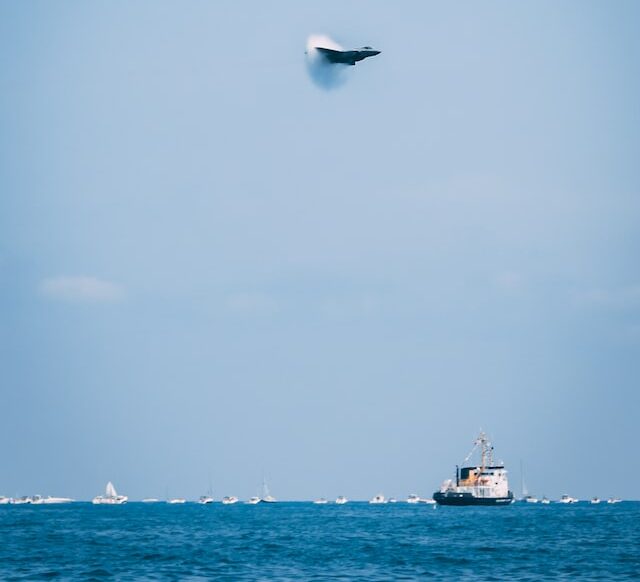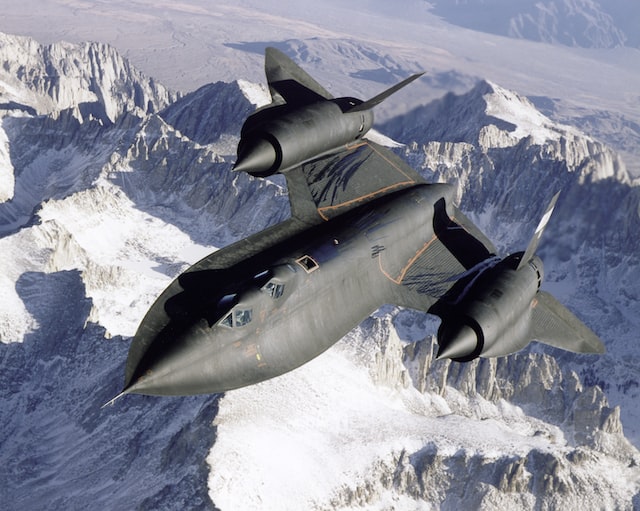Transonic and supersonic are two terms used to describe different speeds of sound. Transonic speed is the range between Mach 0.8 up to Mach 1, while supersonic takes place at speeds exceeding Mach 1. Aircraft that fly in these ranges experience drag forces differently, which affects their performance and design elements. Understanding transonic and supersonic velocities can be a useful tool for anyone looking to gain an understanding of aerodynamics or aviation technology as a whole.
What is Mach speed?
Mach speed is the velocity of sound in a particular medium. The term Mach number is used to describe the ratio of an object’s speed to the speed of sound in that medium. For example, if an aircraft is flying at Mach 2, it is travelling at twice the speed of sound. Mach speed can be used to describe speeds in either fluids or gases. In fluid dynamics, Mach number is a measure of the flow velocity relative to the local speed of sound.
Transonic vs. Supersonic – Key differences
The terms sonic and supersonic describe how fast an object is moving relative to the speed of sound. The speed of sound is about 1,225 kilometers per hour (kph) in dry air at sea level. An object moving at the speed of sound is said to be travelling at sonic velocity. Anything moving faster than the speed of sound is traveling at supersonic velocity.
The distinction between these terms is important because objects travelling at or near the speed of sound experience different aerodynamic forces than those travelling at subsonic or supersonic speeds. For example, when an aircraft reaches sonic velocity, the airflow around its wings becomes disturbed and shock waves form on the leading edge of the wing. These shock waves cause a sudden increase in drag, which can make it difficult for an aircraft to maintain supersonic velocity.
In contrast, transonic flight occurs when an aircraft is travelling just below the speed of sound (approximately Mach 0.8). The airflow around the aircraft during transonic flight is much smoother than during sonic or supersonic flight, resulting in lower drag and higher fuel efficiency.
Transonic speeds are those speeds between Mach 0.8 and 1.0, where the effects of compressibility first become significant. At these speeds, local airflow can be accelerated to supersonic velocities near the nose of the aircraft without propagating a shockwave downstream from that point.
Supersonic speeds are those above Mach 1.0, where the airflow is always supersonic and shocks waves are produced along the length of the aircraft. The term “supersonic” generally refers to Mach 1.0 and above.
What is difference between supersonic and hypersonic?
(Photo by Peter Mizsak on Unsplash )

The main difference between supersonic and hypersonic flow is the Mach number at which they occur. Supersonic flow is defined as occurring at Mach numbers greater than one, while hypersonic flow occurs at Mach numbers greater than five. The boundary between these two regimes is known as the sonic barrier.
At low Mach numbers, the fluid flow around an object can be considered to be incompressible. This means that the density of the fluid remains constant even as the velocity of the fluid increases. However, at high Mach numbers (supersonic and hypersonic), the flow becomes compressible and the density of the fluid decreases as the velocity increases. This decrease in density causes a reduction in lift and an increase in drag on an object moving through a compressible fluid.
The other major difference between supersonic and hypersonic flow is in the behavior of shock waves. A shock wave is a region of highly compressed fluid that forms when an object moving through a fluid reaches a certain speed. In supersonic flow, shock waves are attached to the surface of an object; however, in hypersonic flow, shock waves are detached from the surface of an object. This change in behavior is due to the increase in temperature with increasing Mach number. At high temperatures, molecules in the gas begin to dissociate and ionize, which changes their behavior and allows them to slip past each other more easily. This process is known as rarefaction.
Is Mach 10 hypersonic?
Yes, Mach 10 is hypersonic. In fact, anything above Mach 5 is generally considered hypersonic. Transonic speeds are those between Mach 0.8-1.0, while supersonic speeds are those between Mach 1.0-5. Anything above Mach 5 is considered hypersonic.
Who broke Mach 1.0?
In October of 1947, United States Air Force (USAF) pilot Chuck Yeager became the first person to fly faster than the speed of sound. He was flying the experimental rocket-powered Bell X-1 aircraft, which he nicknames Glamorous Glennis. The X-1 was dropped from a bomber plane at an altitude of 43,000 feet (13,100 meters), then ignited its rockets and reached a top speed of 700 miles per hour (1,127 kilometers per hour). This is equivalent to Mach 1.06.
What are the 4 speeds of flight?
1. The first speed of flight is called subsonic. This is when the aircraft is travelling slower than the speed of sound.
2. The second speed of flight is called transonic. This is when the aircraft is travelling at the speed of sound.
3. The third speed of flight is called supersonic. This is when the aircraft is travelling faster than the speed of sound.
4. The fourth and final speed of flight is called hypersonic. This is when the aircraft is travelling at extremely high speeds, five times the speed of sound.
What is the max Mach speed?
At sea level, the maximum Mach speed is about 340 m/s. This is also known as the sonic barrier. Mach 1 is the speed of sound. It is the speed at which waves in the air are produced by an object moving through the air. The term comes from the Austrian physicist and philosopher Ernst Mach (1838-1916).
What Mach speed is light?
The speed of light is always the same, no matter how fast an object is moving. However, when an object moves close to the speed of light, its mass increases and it takes more energy to move it. So, while the speed of light is a constant, objects can approach it but never reach it.









